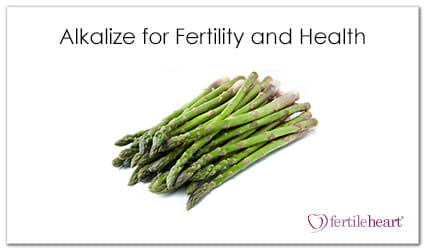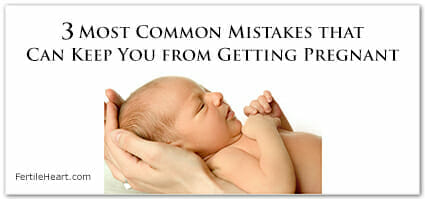One of the latest more confusing acronyms linked to infertility is AMH, which stands for antimullerian hormone. I have summarized my view of the low AMH diagnosis and my take on the current accepted treatment protocols prescribed by reproductive endocrinologists and fertility specialists in a separate document titled Does a Low AMH Indicate Infertility: Getting Pregnant with Low AMH. It’s a document based on close to 20 years of research on the link between physical, emotional and spiritual challenges to fertility. Those of you who are wrestling with a low AMH diagnosis might find it a helpful source of guidance.
In this post I’d like to use the latest confusion around low AMH levels as an invitation to that, which is central to the Fertile Heart™ Ovum Practice: This post is once again about the importance of doing our own thinking. It’s an invitation to use the Fertile Heart™ Ovum tools to conceive a most creative way to approach your diagnosis, whether it’s low AMH, high FSH, fibroids, elevated prolactin levels, the so called unexplained infertility or anything else in between.
The biggest hurdle I had to overcome after my own high FSH diagnosis almost 20 years ago, was the certainly of studies which “proved” that my childbearing years were over. At the time I had no models to follow. And there were no holistic or mainstream protocols that proved helpful to others with high FSH levels which I could emulate. There was no research, no documented studies validating my growing suspicion that those FSH numbers were just a small part of my story. (Twenty years later there are still no studies to prove that.) But some part of me was not quite ready to give up my search for more hopeful answers. and began following a hunch. Slowly but steadily hope began to peek through the clouds of desperation.
But hope is an unstable state-of-heart. If we don’t follow it with action, it fizzles out faster than a cluster of glistening soap bubbles. For me, it was a mixture of despair and desire that finally propelled me to validate my hunch by following through with action. The rest of that story many of you already know. (In case you don’t, I share it in my first book, Inconceivable)
And how does this relate to the latest “definitive” data on the link between low anti mullerian hormone levels and infertility? For that matter how does all this relate to your recent miscarriage, or your fibroids or polycystic ovaries?
In the late nineties, I was sitting in an auditorium in Washington DC listening to a key note by Dr. Laurence Nelson. The conference was focused on POF (premature ovarian failure) and Dr. Nelson was the head of the POF research at the National Institute of Health. I was invited to teach a workshop sharing my story and the observations based on my counseling practice. I had only been teaching a few years but the research I had done throughout my own journey and the case histories of the clients who were able to conceive in spite of dire prognosis, were clues to a much more interesting story about POF than suggested by the medical dogma of the day. (The POF—Premature Ovarian Failure—label was later replaced with a more politically correct POI Premature Ovarian Insufficiency label. Now you’re not a failure, you’re just insufficient. I still like POF. Except to me it stands for Plan on Fighting.)
After the talk the audience was invited to pose questions. Inconceivable had been published a couple of years earlier, and some of the women in the audience read my story. Hands shot up and a few questions followed, most of them addressing the possibility of the link between food and reversal of symptoms, and herbal treatments that might make a difference. Dr. Nelson, answered pretty much every one of these questions with, “we have no studies showing a connection, more research is needed.”
I was sitting in the back of the auditorium burning to speak. No, I had no studies either, only the picture of my daughter and the pictures of my student’s babies to validate what for me was no longer a theory: Elevated FSH levels didn’t mean the end of childbearing years. I raised my hand several times but wasn’t given the opportunity to contribute to the discussion. Thankfully, I found a way to contribute to the discussion in the years that followed and with the support of the Fertile Heart™ community, I hope to continue to do so.
Almost twenty years after my diagnosis, and twelve years after that memorable POF conference Dr Nelson, who is currently the head of the Integrative Reproductive Medicine Group of NIH, along with a team of researchers published a study citing what they called a “surprising discovery.”
This is a quote from an announcement of their findings on the NIH website. (The study was published in Fertility and Sterility) “When the scientists performed ultrasound examinations on the women with POI, they were surprised to discover that 73 percent of the women had ovarian follicles. Moreover, these follicles were capable of producing ovarian hormones.”
But hundreds of women in the last two decades have already not only known the facts validated by this scientific discovery but gave birth to healthy babies after following a variety of treatment protocols. Sadly for NIH, our findings are merely anecdotal evidence. So the NIH research team tells us we need to wait for more reliable data. Here is what the team of the NIH scientists recommend as they contemplate the implication of their study on elevated FSH levels:
“The discovery that most women with primary ovarian insufficiency have immature eggs remaining in their ovaries raises the possibility of developing treatments for the infertility that accompanies the condition,” said Alan E. Guttmacher, M.D., acting director of the Eunice Kennedy Shriver National Institute of Child Health and Human Development (NICHD), the NIH institute at which the study was conducted.
We are told that now there is “a possibility of treatment!” It shouldn’t take much longer than another decade or so. How should those of us who are wrestling with “premature ovarian insufficiency” respond to the recommendations of the research team?
Do we ignore studies? Are low AMH, and high FSH numbers meaningless? Not to me. The findings of reproductive endocrinology and fertility related research can be eminently useful. But only if we don’t stop to do our own thinking, feeling, pondering, learning and experimenting (in a way that doesn’t harm us) and choose a most life-enhancing path to our child.
Here is an invitation: Tell the story of your diagnosis in humaneese, a language without medical jargon. Describe what is happening in your Holy Human Loaf as you would describe it to a ten year old child. Then explain what you think needs to happen in order for a pregnancy to become possible using the same plain language and reasoning that would make sense to a ten year old.
The ten year old wisdom-child inside you might just have some answers worthy of hearing.







